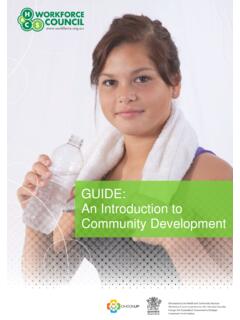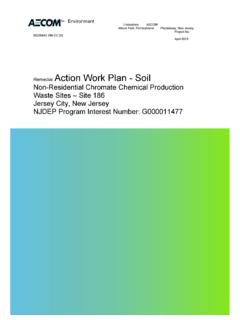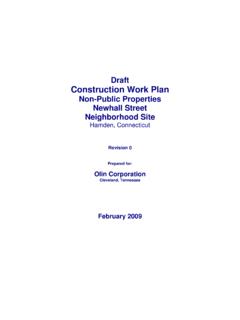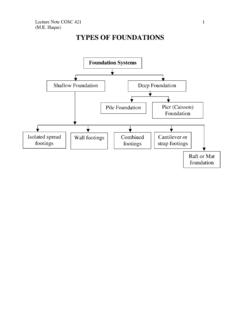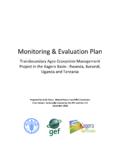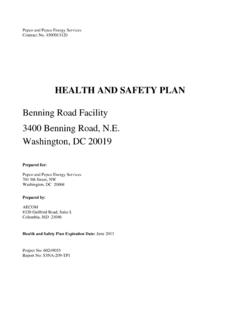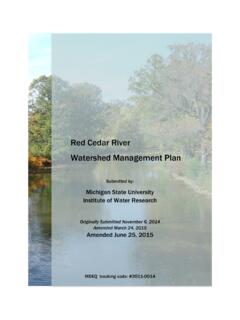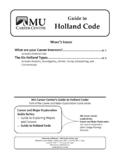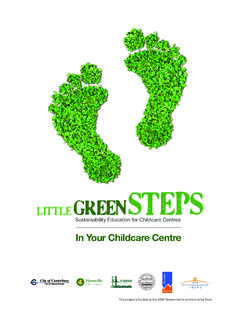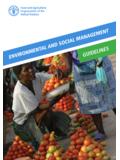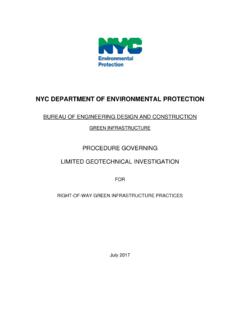Transcription of GUIDE: Developing a Population Health Project Plan
1 GUIDE: Developing a Population Health Project plan Contents Purpose of Resource .. 3 Units of Competency .. 3 Acknowledgement .. 3 Developing Goals and Objectives .. 4 Developing a Project Timeline .. 6 Developing a Project Budget .. 10 Project Evaluation .. 13 Evaluation Planning Template .. 18 References, Additional Reading and 20 Purpose of Resource The purpose of this resource is to provide learners with step-by-step guidelines and information to support comprehensive planning, development and implementation of Population Health initiatives and programs. Trainers may choose to provide this resource as additional supplementary information to support learners understanding and completion of relevant assessments. Units of Competency This resource supports learning and completion of assessments for the following units of competency: HLTPOP501C Apply a Population Health framework HLTPOP503C plan a Population Health Project HLTPOP504C Evaluate a Population Health Project Acknowledgement This resource has been adapted from a range of existing resources of which have been referenced at the end of this guide.
2 Developing Goals and Objectives Developing goals and objectives is the first step to Developing any Project plan . This process often causes angst among people who do Health promotion work as it can seem confusing and difficult to develop succinct and straightforward goals and objectives. However without succinct goals and objectives, we are unable to define what we are planning to do. What is a Goal? A Goal is the broad or long term change the Project is working towards. It is a statement of what you ultimately want to achieve or your destination. When considering Health and wellbeing, goals might relate to improving Health and wellbeing status through changes in mortality and morbidity, disability, quality of life and equity.
3 Achievement of goal(s) can only be expected once a number of objectives have been met. Sample goal: Employees will have access to healthier food options within the workplace What are Objectives? Objectives on the other hand are statements about more specific and immediate changes you want in order to progress toward your overall goal. As objectives are a statement about change, it often includes words such as: to increase, to improve, to reduce. The changes might be in skill levels, attitudes, knowledge, processes, awareness or behaviour. Sample objective: All vending machines within the workplace will be modified to include at least 50% healthy food options by 1 September 2013. Healthy food options include wholegrain breads and cereals, fruits, vegetables, low fat dairy, lean meats, water and low kilojoule drinks.
4 The SMART acronym can help us to write realistic objectives: Specific - indicates a clear action on a determinant, Population group and setting. o Example: to stop teens from smoking is too general. Instead try, At least 90 per cent of schools in the community will institute campus wide no-smoking policies by 2015 . Measurable - includes feature that will help you tell whether it has succeeded. o Example: To ensure hospital staff eat more fruit cannot be clearly measured. Instead try, To increase fruit and vegetable consumption among workers in the Hospital (the target audience) by 50 per cent by June 2013 . Achievable - can be realistically achieved on time and within available resources. o Example: To stop youth from drinking alcohol is not realistically achievable.
5 Instead try, To reduce alcohol consumption by youth ages 14-16 in Queensland by 5 per cent by 31 December 2013 . Relevant - to the Health issue, the Population group and your organisation. o Example: To improve physical activity levels among people with low literacy by teaching adults to read better does not directly address the Health issue. Instead try, Developing pictorial instructions that can be understood at low reading levels to improve physical activity among people with low literacy by 10 per cent in the next six months . Time framed it has a timeframe for action . o Example, To reduce the proportion of adults in Australia who smoke to 12 per cent does not have a timeframe. Instead try, To reduce the proportion of adults in Australia who smoke to 12 per cent by 2015.
6 What are Strategies/Actions? Strategies are the steps you will need to take to implement the objective. Some plans will require you to break down these strategies further into actions or the tasks that you will need to undertake against each of the strategies. Below is a very simple Project example summarising a goal, objectives and strategies: Project Goal: To Plant a Vegetable Garden Objective 1: To research the conditions needed to grow carrots, broccoli and cabbage, in two weeks time Strategies: Test soil Research weather conditions Research need for these vegies Research their water usage/sustainability Investigate whether thieves, possums, birds etc will be a problem Objective 2: Plant vegetables in four weeks time Strategies: Make sure of equipment Make sure of family dedication to helping Buy seeds/plants Prepare the soil Set aside time to work in the garden Plant Objective 3: Harvest and sell vegetables in three months time Strategies.
7 Water vegies Weed garden Protect from possums, birds and thieves Pick vegies Take vegies to the market Source: Developing Goals and Objectives Fact Sheet, A Guide to Health Promotion action , Women s Health West, Victoria, Developing a Project Timeline Once Project goals, objectives and activities are identified, the next step is to develop a Project timeline. This should list all the key activities that need to be done for each objective including who will do them and the date you expect each activity to start and finish. Allow plenty of time to get all the activities done. It s a good idea to allow some extra time in case things don t quite go to plan or need to be rescheduled due to factors beyond your control. It is useful, particularly if you are planning an event, to work backwards from the event date to work out when you need to have each activity completed by.
8 To help keep track of the Project activities and timeframes, it is best to list activities in your Project plan in order from the start date of each activity. Include enough detail in the timeline to be able to guide the Project team through the Project from start to finish and keep the team on track. A very basic timeline template is provided below: Project Goal: Objective 1: Activity Responsibility Start date End date Objective 2: Activity Responsibility Start date End date Project Scheduling Tool Gantt Charts The Gantt Chart is a horizontal bar chart. It shows the Project activities and tasks in sequential order with the bars representing the time estimated to complete them. The chart graphically represents the time relationship of activities, tasks, milestones and resources in a Project .
9 It is a flexible document and is regularly updated through the life of the Project . It usually includes: The major activities and tasks of the Project . The Project milestones. The interdependencies between phases/activities/tasks. A unique identifier for each phase/activity/task. A timeline. The person or resource responsible for each item. The Gantt Chart is generally created at the start of a Project and used as a baseline for reporting. The chart can be regularly updated to realign future work or add new work to the Project scope with the remaining timeframe. A Gantt Chart is developed to: Assist in determining how long activities will take. Assist in determining the relationship between activities. Identify the critical path that is the shortest possible path from the first activity to the last.
10 Use as a baseline for reporting. Assist with delegation and managing of team workloads. Assist in determining how long the Project will take. Assist with identification and management of Project risks. Confirm a common understanding of the Project timeline among the Project team. A completed Gantt Chart that can be used for day-to-day management, planning and reporting. It is also a useful tool for management and Project sponsors to clarify planning estimates, work required and timelines. Gantt Charts can be created manually, through the use of a spreadsheet ( Microsoft Excel) or a Project scheduling software package ( Microsoft Project ). Over the page is an example of a manually created Gantt Chart using Microsoft Excel. This sample and a template Gantt Chart is also available through this package of supporting resources.

